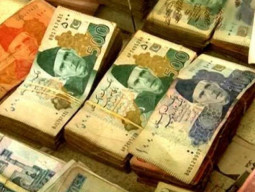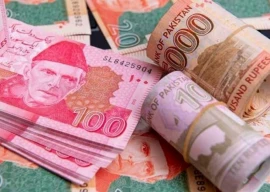
The one-of-a-kind hybrid rocket has been named Raheel 1, Raheel meaning Voyager, which is the name of National Aeronautics and Space Administration's (Nasa's) interstellar mission programme. The idea to make a hybrid rocket that works with the fuel and oxidiser mix was the brain child of Dr Siddiqui, who researched on the technology for more than a year.
US astronauts prepare station for commercial space taxis
"I always wanted to do something to help in aerospace engineering," said Dr Siddiqui, who has done his masters in aerospace engineering and PhD in robotics, while talking to The Express Tribune
DSU's rocketry programme is the second such university-level programme in Asia and the varsity is among 20 universities in the world doing cutting edge research in the field, claimed Dr Siddiqui, explaining that other than DSU, only India is working on such technology in Asia.
The DSU Star Busters team tested Raheel 1 three times during August, with the most successful test conducted on August 12. The rocket's fire was checked and tested for five seconds, in which it produced a thrust force of over 50 kilogrammes. "A liquid oxygen fuel tank, containing six litres of fuel, is used to support the rocket," informed Dr Siddiqui.

"The structure of Raheel 1, that cost nearly Rs50,000, took around six months to complete," stated Aslam, adding that their team will take another eight months to further develop and refine their innovation.
The rocket can be used in supersonic cars and small satellites in the future. "The shape and size can vary with the same formula and research and it will be very cheap to make, as compared to other options available in the country," said Khizar.
"We are using the same formula and research to make the fastest car in Asia, supported by the university, that will have horsepower of 500km per hour," informed Dr Siddiqui.
"Raheel 1 is now in testing phase and the students are looking after time lapse and all other factors," said mechanical lab engineer Mahrukh Mumtaz Hussain, adding that Pakistan has not done much work in this field because of its high cost, however, this innovation [Raheel 1] will bring the cost down.
Scientists to unveil new Earth-like planet
The three-man team has also developed a computer application through which they can control and evaluate the speed and thrust of the rocket. "A micro-controller is attached to the rocket's stand that is connected to the computer application. It detects the rocket's force, time and all other factors," said Dr Siddiqui.
Structure explained
A hybrid rocket is made up of an aluminum body with a graphite coat inside as it can work on higher temperature as well, explained Dr Siddiqui, showing the thick, black coat inside Raheel 1.
"We have used candle wax inside the rocket that can also be replaced with leather or rubber," he said, adding that the wax can be reused after cooling down in 15minutes. Leather and rubber are not environment-friendly elements, he added.
Testing precautions
We use gloves, goggles, fire extinguishers and keep a decent distance from the testing area as precautions at the time of testing, said Dr Siddiqui, adding that currently, Raheel 1 can be tested for more than a minute, but since DSU is located in a residential area, it is difficult to do so.
Published in The Express Tribune, August 27th, 2016.























COMMENTS
Comments are moderated and generally will be posted if they are on-topic and not abusive.
For more information, please see our Comments FAQ